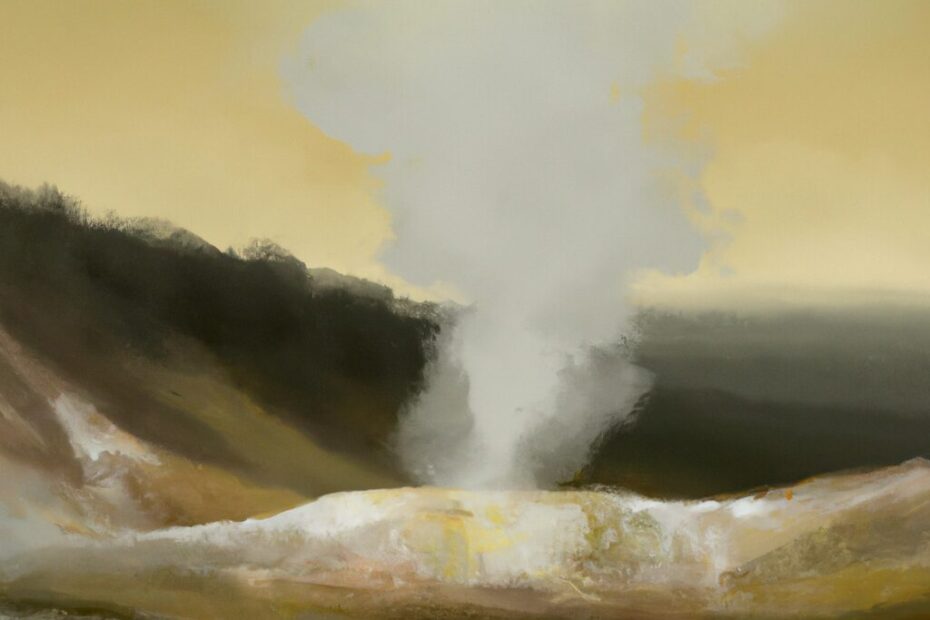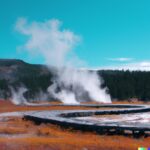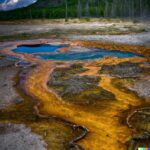Yellowstone National Park is a breathtaking natural wonder, home to stunning hot springs, geysers, and diverse wildlife. While exploring this iconic park, it is crucial to stay on designated paths to ensure both your safety and the preservation of this unique ecosystem.
Venturing off paths can pose serious dangers, from unstable ground to unexpected wildlife encounters. By following park rules, staying on designated paths, and keeping a safe distance from wildlife, visitors can enjoy the park’s beauty while protecting both themselves and the environment.
What is Yellowstone National Park?
Yellowstone National Park, located primarily in the U.S. state of Wyoming, is renowned for its breathtaking natural beauty, diverse wildlife, and unique geothermal features.
Established in 1872, Yellowstone holds the distinction of being the first national park globally, a pioneering initiative in the realm of conservation. Its creation marked a significant shift towards preserving the natural wonders of the world for future generations.
The park encompasses over 2 million acres of pristine wilderness, offering a sanctuary for numerous species such as grizzly bears, wolves, and bison. Yellowstone’s geothermal features, including iconic geysers like Old Faithful, showcase the Earth’s natural forces at play, attracting millions of visitors annually.
Why is it Important to Stay on Paths at Yellowstone National Park?
Staying on designated paths at Yellowstone National Park is crucial for visitor safety, ecosystem preservation, and minimizing human impact on the park’s delicate environment.
Following park regulations and adhering to signage plays a pivotal role in safeguarding both the natural beauty of the park and the well-being of its diverse wildlife inhabitants. By staying on designated paths, visitors not only prevent soil erosion and damage to fragile vegetation but also reduce the risk of encountering potentially dangerous wildlife. Respecting the park’s guidelines ensures that everyone can enjoy a positive and enriching experience, without disturbing the harmonious balance of the ecosystem that Yellowstone National Park strives to maintain.
What are the Dangers of Going Off Paths at Yellowstone National Park?
Venturing off designated paths at Yellowstone National Park poses significant risks, including exposure to natural hazards, unstable ground near geothermal features, and potential disturbance to wildlife habitats.
Exploring off-trail can lead individuals to inadvertently enter dangerous geothermal areas, where scalding hot water and boiling mud pools pose severe burn risks. Navigating through wilderness zones without proper trails increases the likelihood of getting lost or encountering steep terrain that is difficult to traverse. Straying from designated paths can disrupt the natural behaviors of wildlife, possibly leading to dangerous interactions with animals like bears or bison.
Visitors are strongly advised to stay on marked trails to protect themselves and the park’s ecosystem.
Hot Springs and Geysers
Exploring the hot springs and geysers of Yellowstone National Park provides a mesmerizing experience, yet it is essential to heed park guidelines and avoid venturing off marked paths to ensure visitor safety and preserve these fragile geothermal areas.
The unique and otherworldly landscapes of Yellowstone’s thermal features can be both captivating and dangerous. Following designated routes not only protects the delicate ecosystem but also safeguards visitors from potential accidents.
Yellowstone’s hot springs are not only visually stunning but also harbor extreme heat and unpredictability. Adhering to safety protocols ensures that these natural wonders can continue to be enjoyed for generations to come.
Responsible tourism practices play a crucial role in maintaining the balance between exploration and preservation.
Unstable Ground
Navigating through areas of unstable ground at Yellowstone National Park requires caution and adherence to designated paths to prevent accidents, minimize environmental impact, and ensure the safety of visitors and the preservation of park trails.
Staying on marked trails not only safeguards the delicate ecosystem but also reduces the risk of endangering oneself or others. The fragile geothermal features and unique wildlife of Yellowstone are at risk when visitors stray off-path, trampling vegetation and disrupting animal habitats.
Preserving the park’s natural beauty and minimizing human impact is a collective responsibility that all visitors must uphold. By following guidelines, visitors can contribute to the long-term conservation efforts and enjoy the park safely and sustainably.
Wildlife Encounters
Encountering wildlife in their natural habitat at Yellowstone National Park is a thrilling experience, but it is crucial to respect wildlife boundaries, maintain a safe distance, and avoid disturbances to protect both visitors and the diverse animal species that call the park home.
By understanding the importance of wildlife respect, visitors can contribute to the conservation efforts aimed at safeguarding these magnificent creatures. Showing awareness of protected species and their habitats further enhances the overall experience at Yellowstone. Safety precautions, such as not feeding animals or approaching too closely, play a vital role in ensuring a harmonious coexistence between humans and wildlife. Ultimately, responsible behavior towards wildlife fosters a deep appreciation for nature’s wonders and promotes the long-term sustainability of Yellowstone’s ecosystem.
Getting Lost
Navigating the vast wilderness of Yellowstone National Park requires proficient navigation skills, adherence to park boundaries, and knowledge of emergency procedures to prevent getting lost and ensure a safe and enjoyable outdoor adventure.
One of the key risks of getting lost in Yellowstone is the sheer size and complex terrain of the park, which can disorient even experienced hikers. It’s crucial to carry a map, compass, or GPS device and to stay on designated trails to minimize the chances of losing your way. Understanding the park’s boundaries is essential to avoid accidentally crossing into restricted areas. Being familiar with emergency protocols can mean the difference between a minor inconvenience and a life-threatening situation, underscoring the importance of preparedness and responsible exploration in such a vast and diverse environment.
How to Stay Safe on Paths at Yellowstone National Park?
Ensuring safety while hiking on designated paths at Yellowstone National Park involves following safety tips, seeking assistance from park rangers when needed, keeping emergency contacts handy, and exhibiting responsible behavior to protect oneself and the park environment.
While exploring the vast wilderness of Yellowstone, visitors should always stay on marked trails to avoid getting lost or disturbing wildlife habitats. In case of emergencies, it is vital to notify the nearest park ranger station immediately. Park rangers are highly trained to handle various situations and provide aid when required. Visitors can also enhance safety by carrying water, snacks, a map, and a compass during hikes. Responsible behavior includes refraining from littering, respecting wildlife, and adhering to park regulations for a memorable and safe adventure.
Follow Park Rules and Regulations
Adhering to park rules and regulations at Yellowstone National Park is essential to ensure a safe and enjoyable visit while respecting park guidelines, promoting responsible behavior, and preserving the park’s natural resources for future generations.
By following the designated trails, refraining from littering, and respecting wildlife from a safe distance, visitors can play a crucial role in maintaining the delicate balance of the ecosystem. Understanding and obeying park guidelines not only safeguards the natural beauty of the park but also prevents accidents and potential environmental damage. Practicing visitor etiquette, such as keeping noise levels to a minimum and avoiding off-limits areas, demonstrates a commitment to sustaining the park’s integrity and ensures a harmonious experience for all.
Stay on Designated Paths
Remaining on designated paths at Yellowstone National Park is a fundamental safety practice that ensures trail integrity, minimizes environmental impact, and reduces the risk of accidents associated with off-path exploration.
When visitors venture off established trails, they not only disturb fragile ecosystems but also put themselves in danger of getting lost or encountering wildlife unexpectedly. Following trail etiquette is crucial to protect the natural beauty of the park and the safety of both visitors and wildlife. By staying on designated paths, visitors can also prevent erosion, preserve vegetation, and help maintain the overall ecological balance of the area. Trail conditions can change rapidly, and sticking to marked trails ensures that visitors are not caught unaware by hazards such as unstable terrain or sudden weather changes.
Keep a Safe Distance from Wildlife
Maintaining a safe distance from wildlife in Yellowstone National Park is crucial for ensuring both visitor safety and the well-being of the park’s diverse animal inhabitants, preventing potential habituation to human presence.
When visitors respect the natural behavior and habitats of these animals, it fosters a healthy coexistence between humans and wildlife. Wildlife awareness is key, as understanding the signs of stress or agitation in animals can help avoid dangerous encounters. By observing from a distance and using binoculars or cameras with zoom lenses, visitors can appreciate these majestic creatures without disturbing them. Habituation poses risks not only to humans but also to the animals themselves, as they may become reliant on human food sources and lose their natural instincts.
Be Aware of Your Surroundings
Remaining attentive to your surroundings while exploring Yellowstone National Park enhances your safety, promotes environmental awareness, and fosters a deeper connection with the natural wonders and diverse ecosystems within the park.
Being conscious of trail markers is vital for not only navigation but also for preserving the delicate balance of the park. By following designated paths and respecting park boundaries, visitors can minimize their impact on the environment and wildlife. It’s essential for individuals to practice Leave No Trace principles, such as packing out all trash and refraining from disturbing plants and animals. Engaging with nature responsibly ensures that future generations can also enjoy the park’s beauty and biodiversity.
What are the Benefits of Staying on Paths at Yellowstone National Park?
Choosing to stay on designated paths at Yellowstone National Park brings multiple benefits, including ecosystem protection, responsible tourism practices, fostering a stewardship mindset, and ensuring safe and respectful exploration of the park.
By following established trails, visitors not only minimize their impact on delicate flora and fauna but also contribute to the preservation of Yellowstone’s diverse habitats. The role of park stewards is vital in guiding visitors towards sustainable interactions with the environment, emphasizing the value of treading lightly on the land. Safe exploration along designated routes not only safeguards the natural beauty of the park but also enhances the chances of spotting its abundant wildlife in their undisturbed habitats.
Preserving the Park’s Natural Beauty
Preserving the natural beauty of Yellowstone National Park is a collective responsibility that involves protecting its diverse flora and fauna, minimizing environmental impact, and supporting park preservation efforts through responsible visitor behavior.
- The park’s ecosystem is a delicate balance of interconnected wildlife and plant species that have evolved over centuries. Human activities such as pollution, habitat destruction, and climate change pose significant threats to this delicate balance.
- By implementing sustainable practices and adhering to park regulations, visitors can help ensure the long-term preservation of this unique natural environment. Conservation initiatives, like habitat restoration programs and wildlife protection measures, play a crucial role in safeguarding the park’s rich biodiversity for future generations to enjoy.
Protecting Wildlife and Their Habitat
Protecting the wildlife and their habitats at Yellowstone National Park is integral to maintaining the ecological balance, safeguarding protected species, and preserving the natural heritage for future generations to appreciate and enjoy.
Visitors to the park also play a crucial role in ensuring the protection and preservation of these delicate ecosystems. By following park guidelines, staying on designated trails, and respecting wildlife habitats, visitors can help minimize human impact on the environment.
Through education and awareness, visitors can develop a deeper understanding of the interconnectedness of all living beings within the park, further fostering a sense of responsibility towards environmental conservation. Their actions contribute to the sustainability of wildlife populations and the overall health of Yellowstone’s diverse habitats.
Ensuring Personal Safety
Prioritizing personal safety through responsible behavior and adherence to safety measures at Yellowstone National Park is paramount to preventing accidents, responding effectively to emergencies, and ensuring a secure and enjoyable outdoor experience within the park.
Visitors are encouraged to familiarize themselves with the park’s emergency protocols, including designated meeting points and contacting park authorities in case of an emergency.
Staying on marked trails, respecting wildlife from a safe distance, and following park guidelines for activities like hiking and camping are crucial for accident prevention.
By practicing responsible behavior and being mindful of safety precautions, visitors not only protect themselves but also contribute to preserving the park’s natural beauty for future generations.
Last Updated on February 11, 2024 by Jon Waraas – Originally Posted: February 11, 2024

I’m Jon Waraas, and I’ve been navigating the online world since 2006. By day, I’m the proud owner of some eCommerce gems, and by night, I’m the voice behind the adventures on Waraas.Com.
My heart, however, belongs to the wild beauty of Yellowstone National Park. I’ve got a collection of websites dedicated to sharing the wonders of this natural masterpiece. Oh, and did I mention? I’m currently building my own cabin inside the ghost town of Gilmore, Idaho – a cabin with tales to tell!
When I’m not immersed in the digital realm, you’ll find me lacing up my boots for a good hike or setting up camp under the star-studded sky.




